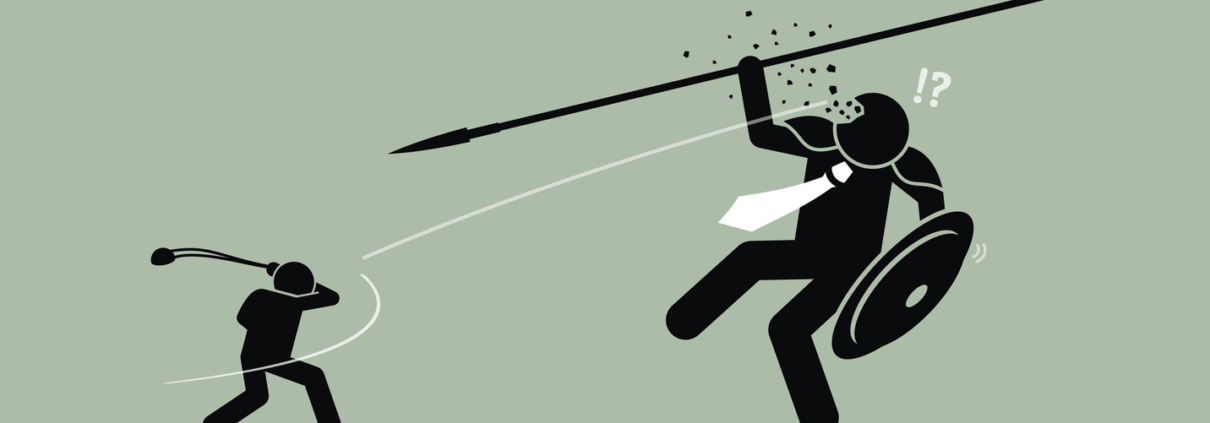Blocking Patents Level the Playing Field
In this blog post we discuss how an early patent directed to a computer algorithm was successfully litigated through a jury trial, an example of how a blocking patent can level the playing field even against a goliath.
In the late 1980s, a group of Caltech graduate students formed a company called STAC Electronics (STAC) with venture funding. The venture capitalist who funded STAC reached out to me to patent a data compression algorithm called “Lempel-Zev-Satc” (LZS) lossless compression. At the time, patenting an algorithm, let alone one implemented by a computer, was a controversial topic. This LZS algorithm was used by a product STAC published: a product named “Stacker” that doubled the storage/disk capacity of the computer.
Stacker was wildly successful. Bill Gates used Stacker and determined that storage doubling must be an embedded feature of the Microsoft operating system, MS-DOS. Microsoft sought a license from STAC but refused to pay any license fees, so STAC refused to grant any license to Stacker. Microsoft incorporated a different-but-similar product called DoubleSpace, developed by Verisoft, into the MS-DOS 6 operating system to double the disk capacity.
In 1993, STAC sued Microsoft for patent infringement on the LZS algorithm included in DoubleSpace. The case went all the way to a jury trial. This was the very first jury trial on a software patent litigated against Microsoft. The jury found Microsoft infringed the patent and awarded STAC over $100 million in damages and an injunction against Microsoft. The court also ordered Microsoft to recall from the market any products shipped with DoubleSpace. STAC and Microsoft later settled the case before appeal so that Microsoft could continue to ship MS-DOS 6, avoid having to recall products already in the market, and ship later versions of Microsoft operating systems that incorporate DoubleSpace.
This case served as the industry bellwether that showed patents could be obtained on computer implemented algorithms and that small companies like STAC could stand up to the likes of Microsoft, the de facto operating system monopolist, and level the playing field with patents. Likewise, we expect many AI start-ups will use blocking patents on their AI innovations to acquire strong footholds in the market, even against AI Goliath competitors.
Battles for dominance using patents tend to occur when the market reaches saturation for a technology, typically toward the end of the innovation stage of the technology cycle (https://generativeiq.com/ai-innovations-will-lead-to-a-tsunami-of-ip-rights/), when it begins to level off. Therefore, a thoroughly planned IP strategy that balances the costs and benefits of obtaining IP rights is essential for any AI start-up. Just like the venture capitalist astutely advised STAC to seek patents to protect the LZS data compression algorithm, AI start-ups that own blocking patent rights in the generative AI platform will have superior competitive advantages and enjoy the greatest chances of striking gold.
By Bob Steinberg


